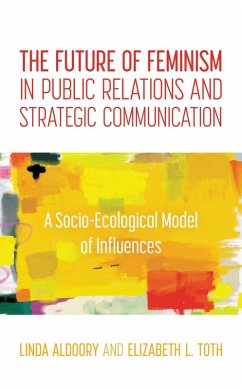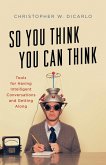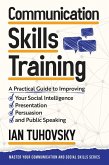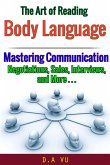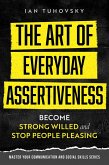Linda Aldoory, Elizabeth L. Toth
The Future of Feminism in Public Relations and Strategic Communication (eBook, ePUB)
A Socio-Ecological Model of Influences
30,95 €
30,95 €
inkl. MwSt.
Sofort per Download lieferbar

15 °P sammeln
30,95 €
Als Download kaufen

30,95 €
inkl. MwSt.
Sofort per Download lieferbar

15 °P sammeln
Jetzt verschenken
Alle Infos zum eBook verschenken
30,95 €
inkl. MwSt.
Sofort per Download lieferbar
Alle Infos zum eBook verschenken

15 °P sammeln
Linda Aldoory, Elizabeth L. Toth
The Future of Feminism in Public Relations and Strategic Communication (eBook, ePUB)
A Socio-Ecological Model of Influences
- Format: ePub
- Merkliste
- Auf die Merkliste
- Bewerten Bewerten
- Teilen
- Produkt teilen
- Produkterinnerung
- Produkterinnerung

Bitte loggen Sie sich zunächst in Ihr Kundenkonto ein oder registrieren Sie sich bei
bücher.de, um das eBook-Abo tolino select nutzen zu können.
Hier können Sie sich einloggen
Hier können Sie sich einloggen
Sie sind bereits eingeloggt. Klicken Sie auf 2. tolino select Abo, um fortzufahren.

Bitte loggen Sie sich zunächst in Ihr Kundenkonto ein oder registrieren Sie sich bei bücher.de, um das eBook-Abo tolino select nutzen zu können.
Linda Aldoory and Elizabeth L. Toth present an innovative socio-ecological model for understanding and building a feminist future for public relations practices. This approach acknowledges previous gaps in scholarship and practice caused by ideological, societal, mediated, and organizational factors constructing norms and expectations for gender, race, and class.
- Geräte: eReader
- mit Kopierschutz
- eBook Hilfe
- Größe: 0.67MB
Andere Kunden interessierten sich auch für
![The Future of Feminism in Public Relations and Strategic Communication (eBook, PDF) The Future of Feminism in Public Relations and Strategic Communication (eBook, PDF)]() Linda AldooryThe Future of Feminism in Public Relations and Strategic Communication (eBook, PDF)30,95 €
Linda AldooryThe Future of Feminism in Public Relations and Strategic Communication (eBook, PDF)30,95 €![Female Business Owners in Public Relations (eBook, ePUB) Female Business Owners in Public Relations (eBook, ePUB)]() Allison WeidhaasFemale Business Owners in Public Relations (eBook, ePUB)67,95 €
Allison WeidhaasFemale Business Owners in Public Relations (eBook, ePUB)67,95 €![Temporal Horizons and Strategic Decisions in U.S.-China Relations (eBook, ePUB) Temporal Horizons and Strategic Decisions in U.S.-China Relations (eBook, ePUB)]() Daniel Joseph TaussTemporal Horizons and Strategic Decisions in U.S.-China Relations (eBook, ePUB)84,95 €
Daniel Joseph TaussTemporal Horizons and Strategic Decisions in U.S.-China Relations (eBook, ePUB)84,95 €![So You Think You Can Think (eBook, ePUB) So You Think You Can Think (eBook, ePUB)]() Christopher W. DicarloSo You Think You Can Think (eBook, ePUB)24,95 €
Christopher W. DicarloSo You Think You Can Think (eBook, ePUB)24,95 €![Communication Skills Training: A Practical Guide to Improving Your Social Intelligence, Presentation, Persuasion and Public Speaking (Positive Psychology Coaching Series, #2) (eBook, ePUB) Communication Skills Training: A Practical Guide to Improving Your Social Intelligence, Presentation, Persuasion and Public Speaking (Positive Psychology Coaching Series, #2) (eBook, ePUB)]() Ian TuhovskyCommunication Skills Training: A Practical Guide to Improving Your Social Intelligence, Presentation, Persuasion and Public Speaking (Positive Psychology Coaching Series, #2) (eBook, ePUB)0,99 €
Ian TuhovskyCommunication Skills Training: A Practical Guide to Improving Your Social Intelligence, Presentation, Persuasion and Public Speaking (Positive Psychology Coaching Series, #2) (eBook, ePUB)0,99 €![The Art of Reading Body Language : Mastering Communication in Negotiations, Sales, Interviews, and More (eBook, ePUB) The Art of Reading Body Language : Mastering Communication in Negotiations, Sales, Interviews, and More (eBook, ePUB)]() D. A VuThe Art of Reading Body Language : Mastering Communication in Negotiations, Sales, Interviews, and More (eBook, ePUB)1,99 €
D. A VuThe Art of Reading Body Language : Mastering Communication in Negotiations, Sales, Interviews, and More (eBook, ePUB)1,99 €![The Art of Everyday Assertiveness: Become Strong Willed and Stop People Pleasing (Positive Psychology Coaching Series) (eBook, ePUB) The Art of Everyday Assertiveness: Become Strong Willed and Stop People Pleasing (Positive Psychology Coaching Series) (eBook, ePUB)]() Ian TuhovskyThe Art of Everyday Assertiveness: Become Strong Willed and Stop People Pleasing (Positive Psychology Coaching Series) (eBook, ePUB)3,99 €
Ian TuhovskyThe Art of Everyday Assertiveness: Become Strong Willed and Stop People Pleasing (Positive Psychology Coaching Series) (eBook, ePUB)3,99 €-
-
-
Linda Aldoory and Elizabeth L. Toth present an innovative socio-ecological model for understanding and building a feminist future for public relations practices. This approach acknowledges previous gaps in scholarship and practice caused by ideological, societal, mediated, and organizational factors constructing norms and expectations for gender, race, and class.
Produktdetails
- Produktdetails
- Verlag: Bloomsbury eBooks US
- Seitenzahl: 238
- Erscheinungstermin: 18. Juni 2021
- Englisch
- ISBN-13: 9781538128251
- Artikelnr.: 62035664
- Verlag: Bloomsbury eBooks US
- Seitenzahl: 238
- Erscheinungstermin: 18. Juni 2021
- Englisch
- ISBN-13: 9781538128251
- Artikelnr.: 62035664
- Herstellerkennzeichnung Die Herstellerinformationen sind derzeit nicht verfügbar.
Linda Aldoory is professor of communication and associate dean in the College of Arts and Humanities at the University of Maryland College Park. She is also affiliate faculty member of the Department of Women's Studies.
Section 1: Overview of the Book: Model and Definitions
Chapter 1: A Socio-Ecological Model for Public Relations and Strategic
Communication
Chapter 2: The Backstory: Conceptualization and History of Public Relations
and Feminism
Section 2: Ideological Level: Social Norms, Hegemony, and Media
Chapter 3: Ideological Level: The Overarching Power of Hegemony and Social
Norms
Chapter 4: Media Level: Symbiotic yet Contested Terrain
Section 3: Organizational Level: Issues and Theories
Chapter 5: Organizational Level: Their Role in Maintaining the Status Quo
Chapter 6: Organizational Level: Facilitating Inequity and Marginalization
Section 4: Professional Level: Discursive Legitimacy and Professional
Associations
Chapter 7: The Professional Level: Questions of Legitimacy and Value
Chapter 8: Professional Level: Interrogating Difference in Professional
Associations
Section 5: Practitioner Level: Lived Experience and Identity
Chapter 9: The Practitioner Level: The Lived Experiences of Same and
Difference
Chapter 10: Practitioner Level: Theory-Driven Approaches to Understanding
Identity
Section 6: Dialogue and Future Directions
Chapter 11: Dialogue with Scholars and Practitioners: Co-constructing
Meaning of the Model
Chapter 12: Putting the Socio-Ecological Model to Use
Chapter 1: A Socio-Ecological Model for Public Relations and Strategic
Communication
Chapter 2: The Backstory: Conceptualization and History of Public Relations
and Feminism
Section 2: Ideological Level: Social Norms, Hegemony, and Media
Chapter 3: Ideological Level: The Overarching Power of Hegemony and Social
Norms
Chapter 4: Media Level: Symbiotic yet Contested Terrain
Section 3: Organizational Level: Issues and Theories
Chapter 5: Organizational Level: Their Role in Maintaining the Status Quo
Chapter 6: Organizational Level: Facilitating Inequity and Marginalization
Section 4: Professional Level: Discursive Legitimacy and Professional
Associations
Chapter 7: The Professional Level: Questions of Legitimacy and Value
Chapter 8: Professional Level: Interrogating Difference in Professional
Associations
Section 5: Practitioner Level: Lived Experience and Identity
Chapter 9: The Practitioner Level: The Lived Experiences of Same and
Difference
Chapter 10: Practitioner Level: Theory-Driven Approaches to Understanding
Identity
Section 6: Dialogue and Future Directions
Chapter 11: Dialogue with Scholars and Practitioners: Co-constructing
Meaning of the Model
Chapter 12: Putting the Socio-Ecological Model to Use
Section 1: Overview of the Book: Model and Definitions
Chapter 1: A Socio-Ecological Model for Public Relations and Strategic
Communication
Chapter 2: The Backstory: Conceptualization and History of Public Relations
and Feminism
Section 2: Ideological Level: Social Norms, Hegemony, and Media
Chapter 3: Ideological Level: The Overarching Power of Hegemony and Social
Norms
Chapter 4: Media Level: Symbiotic yet Contested Terrain
Section 3: Organizational Level: Issues and Theories
Chapter 5: Organizational Level: Their Role in Maintaining the Status Quo
Chapter 6: Organizational Level: Facilitating Inequity and Marginalization
Section 4: Professional Level: Discursive Legitimacy and Professional
Associations
Chapter 7: The Professional Level: Questions of Legitimacy and Value
Chapter 8: Professional Level: Interrogating Difference in Professional
Associations
Section 5: Practitioner Level: Lived Experience and Identity
Chapter 9: The Practitioner Level: The Lived Experiences of Same and
Difference
Chapter 10: Practitioner Level: Theory-Driven Approaches to Understanding
Identity
Section 6: Dialogue and Future Directions
Chapter 11: Dialogue with Scholars and Practitioners: Co-constructing
Meaning of the Model
Chapter 12: Putting the Socio-Ecological Model to Use
Chapter 1: A Socio-Ecological Model for Public Relations and Strategic
Communication
Chapter 2: The Backstory: Conceptualization and History of Public Relations
and Feminism
Section 2: Ideological Level: Social Norms, Hegemony, and Media
Chapter 3: Ideological Level: The Overarching Power of Hegemony and Social
Norms
Chapter 4: Media Level: Symbiotic yet Contested Terrain
Section 3: Organizational Level: Issues and Theories
Chapter 5: Organizational Level: Their Role in Maintaining the Status Quo
Chapter 6: Organizational Level: Facilitating Inequity and Marginalization
Section 4: Professional Level: Discursive Legitimacy and Professional
Associations
Chapter 7: The Professional Level: Questions of Legitimacy and Value
Chapter 8: Professional Level: Interrogating Difference in Professional
Associations
Section 5: Practitioner Level: Lived Experience and Identity
Chapter 9: The Practitioner Level: The Lived Experiences of Same and
Difference
Chapter 10: Practitioner Level: Theory-Driven Approaches to Understanding
Identity
Section 6: Dialogue and Future Directions
Chapter 11: Dialogue with Scholars and Practitioners: Co-constructing
Meaning of the Model
Chapter 12: Putting the Socio-Ecological Model to Use
